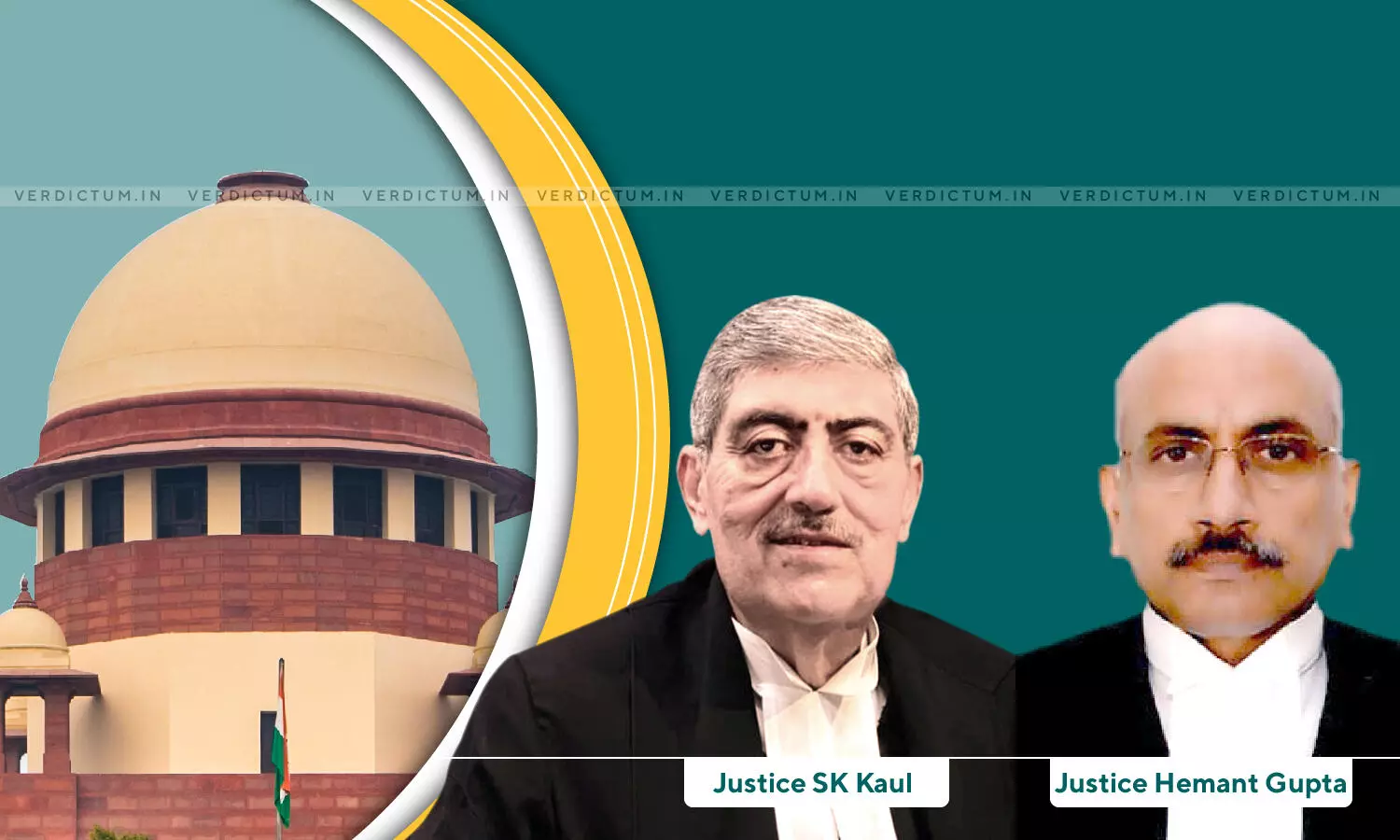
Once A Certificate Of Ownership Is Granted, The Land Stands Transferred And Vested In The Protected Tenant As A Full Owner: Supreme Court
 |
|A two-judge Bench of Justice Sanjay Kishan Kaul and Justice Hemant Gupta observed that once a certificate of ownership is granted, which is required to be published in the Government Gazette, the land stands transferred and vested in the protected tenant as a full owner of such land.
In the case at hand, the Respondent had been a protected tenant of the land. The tenancy rights of this land were said to have been orally surrendered to the Appellant. Following this, the original Inamdar of this land, in 1957 had executed a sale deed in favour of the Appellant, i.e., the purchaser.
On the same day, the Respondent had allegedly sold his tenancy rights in favour of the Appellant. The Appellant then applied for occupancy rights. Accordingly, a certificate of ownership was issued in 1982. However, the Respondent was also issued a certificate of ownership under Section 38-E of the Tenancy Act in 1975.
It was contended by the Appellant that he had the protected rights as they were at first, allegedly surrendered to him orally and subsequently, by a registered document. The Appellant relied upon an order passed by the District Revenue Officer of the Gutubullapur Mandal which recognized the surrender of protected tenancy rights by the Respondent on the basis of an affidavit which was allegedly filed to withdraw the appeal against the grant of occupancy rights to the Appellant.
This order was subsequently set aside by the Hyderabad High Court.
The issues which were dealt with by the Court were –
1) Whether the stand of the purchaser that the protected tenant had surrendered the tenancy rights orally and which was later on accepted by the Mandal Revenue Officer is legal and valid and not in contravention of the provisions of the Tenancy Act?
2) Whether the Appellant could claim occupancy rights in 1982 when the ownership rights were transferred in favour of the Respondent in 1975?
3) Whether there was any transferrable interest in the property which could be granted to the Appellant in 1982?
While referring to previous Judgements of this Court, the Bench noted
The Court observed that according to the Tenancy Act, the protected tenant cannot be dispossessed illegally by the landlord, or by other persons
The Court held that protected tenancy could only be terminated in a "manner known to law". "In the absence of such valid termination of 'protected tenancy', the interest of such protected tenant continues to be operative and subsisting in law and could devolve on his legal heirs and representatives who could then claim restoration of possession.", observed the Court.
While explaining the position of protected tenants under the Tenancy Act, the Court opined. "The protected tenants are placed at much higher pedestal as even if a protected tenant is not in possession of the land, right has been given to him to seek possession later. Therefore, neither Section 19 nor Section 32 forming part of Chapter III of the Tenancy Act are applicable in respect of protected tenant except when the reference is made to the provisions of Section 19 on the basis of Section 38-E(5) which starts with a non obstante clause giving overriding effect to anything contained in Section 38-E."
Coming to the issue of oral surrender of tenancy, the Court held that such a surrender is contrary to Section 38-E(5) read with Section 19(1)(a) of the Tenancy Act.
"Such surrender of oral tenancy of a protected tenant is not permissible under the Tenancy Act except in the manner which is prescribed under Section 38-E (5) read with Section 19 of the Tenancy Act. Still further, the protected tenant has a right to seek possession in terms of Section 36 of the Tenancy Act. Even in terms of Section 38-D, if the land holder intends to sell the land which is in possession of a protected tenant, he has to give a notice in writing of his intention to such protected tenant.", observed the Court.
The Court accordingly held, "Once a certificate of ownership is granted which is required to be published in the Government Gazette, the land stands transferred and vested in the protected tenant as a full owner of such land. Such certificate is final subject to the rights of the landowner under the Tenancy Act which is only to seek compensation."
While addressing the issue of the occupancy rights certificate, the Court held that the Appellant had no right to claim occupancy rights on the basis of possession. In this regard, the Court held, "the grant of Certificate unequivocally transfers ownership rights to the protected tenant."
The Court observed that the Inam Act is subsequent to the Tenancy Act. While examining both the statutes, the Court held, "ownership certificate granted under the Tenancy Act would prevail over the grant of occupancy rights certificate under the Inams Act. Both the Acts operate in different spheres. Inams Act deals with the land owner, whereas the Tenancy Act protects the rights of the tiller i.e., tenant including a protected tenant." Therefore, the Court asserted, "an Inamdar under the Inams Act would not have any right of allotment of occupancy rights in view of overriding effect given to Section 38-E."
Hence, the Court dismissed the appeal, except to the extent of land in respect of which the occupancy certificate was granted to the Appellants in 1982. The Court held that the protected tenant shall be entitled to restoration of possession in terms of explanation to Section 38-E (1) read with Section 32 of the Tenancy Act. The Tehsildar was ordered to ensure that the possession is delivered to the protected tenant within 3 months.